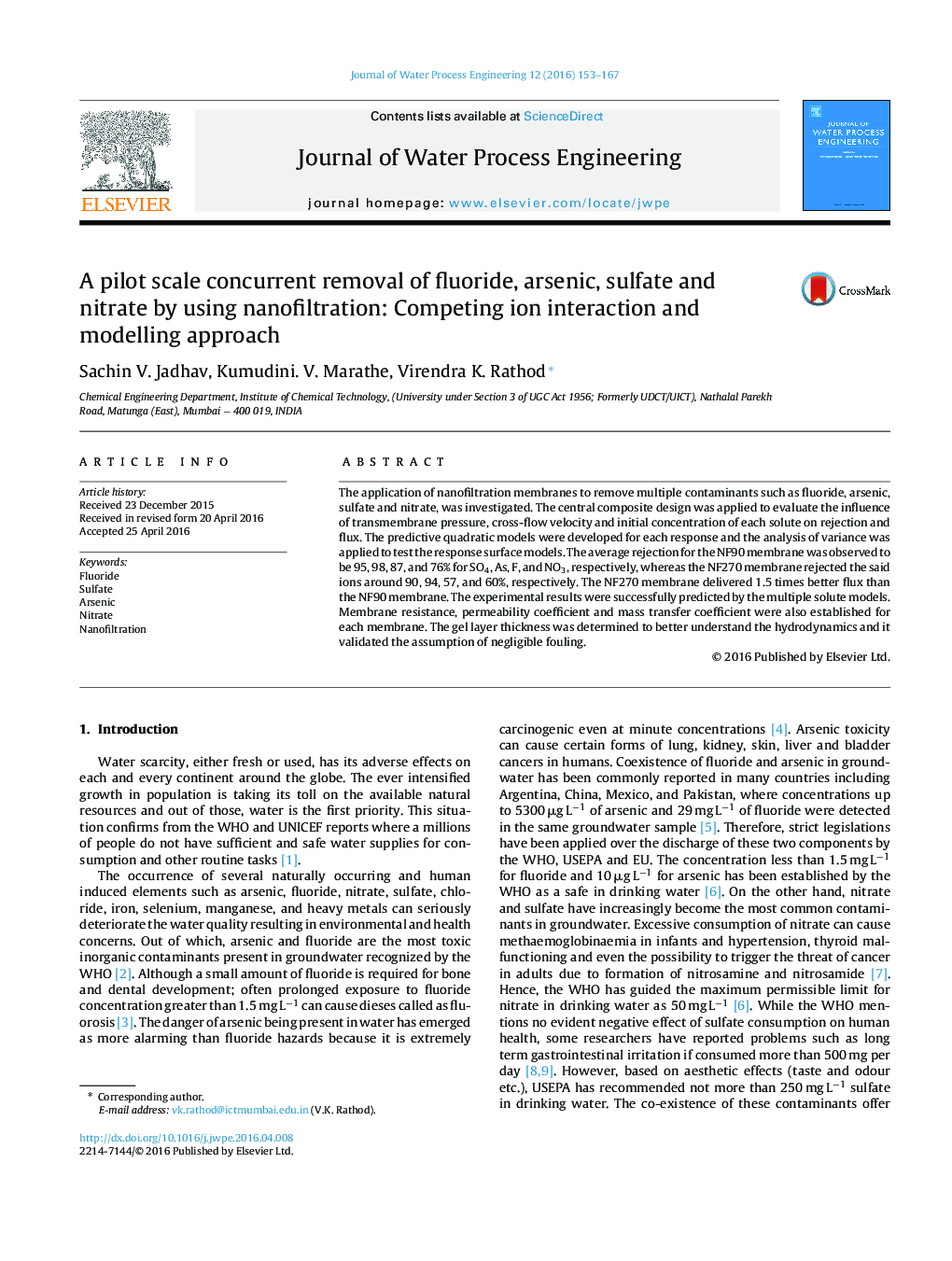| Article ID | Journal | Published Year | Pages | File Type |
|---|---|---|---|---|
| 4909954 | Journal of Water Process Engineering | 2016 | 15 Pages |
Abstract
The application of nanofiltration membranes to remove multiple contaminants such as fluoride, arsenic, sulfate and nitrate, was investigated. The central composite design was applied to evaluate the influence of transmembrane pressure, cross-flow velocity and initial concentration of each solute on rejection and flux. The predictive quadratic models were developed for each response and the analysis of variance was applied to test the response surface models. The average rejection for the NF90 membrane was observed to be 95, 98, 87, and 76% for SO4, As, F, and NO3, respectively, whereas the NF270 membrane rejected the said ions around 90, 94, 57, and 60%, respectively. The NF270 membrane delivered 1.5 times better flux than the NF90 membrane. The experimental results were successfully predicted by the multiple solute models. Membrane resistance, permeability coefficient and mass transfer coefficient were also established for each membrane. The gel layer thickness was determined to better understand the hydrodynamics and it validated the assumption of negligible fouling.
Related Topics
Physical Sciences and Engineering
Chemical Engineering
Chemical Engineering (General)
Authors
Sachin V. Jadhav, Kumudini. V. Marathe, Virendra K. Rathod,
